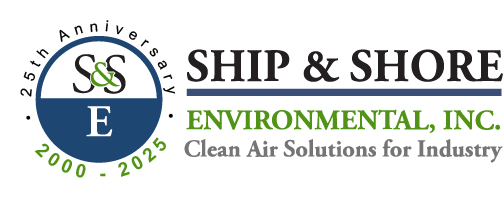Ozone Abatement
Technical Corner
Ozone Abatement
Ozone (O3) is a gas composed of three Oxygen atoms and is extremely reactive and unhealthy to breathe.
Ozone can be considered harmful in circumstances where exposed directly to humans (breathing), and
useful when utilized properly in various processes or protecting Earth’s outer layer. Ozone exists in two
layers of Earth’s atmosphere: Troposphere and Stratosphere. The Troposphere layer exists at ground level
to about 6 miles above ground, whereas Stratosphere layer is above Troposphere from approximately 6 to
30 miles above ground. “Good” ozone exists in Stratosphere, which protects life on Earth from the Sun’s
harmful UV rays. Over the past few decades, this good ozone is reacting to and being destroyed by manmade
chemicals such as CFCs, carbon tetrachloride, methyl bromide, etc.
The main topic of concern deals with the harmful ozone that occurs at the Troposphere layer, or ground
level. At ground level, ozone is extremely harmful for human health and can remarkably damage vegetation
and the environment. Harmful ozone is usually created when oxides of NOx react with volatile organic
compounds (VOCs). It is important that the “bad” ozone be controlled before it is released into the
atmosphere, as O3 has a half life of 20 minutes and is then reduced in half continuously. The “free O” will
react with anything it comes into contact with, including substances that may produce harmful results.
Ozone in the Flexible Packaging Industry
In the flexible packaging industry, ozone is used in printing, laminating, as well as many other applications.
In flexographic processes where ultra violet coatings are used to promote adhesion, ozone is produced by
the ultra violet equipment. In laminators ozone is produced by corona discharge ozonators. The use of
ozone in these applications not only promotes improved adhesion but also reduces melting temperatures,
which assists in the reduction of odor in the coating process, reducing contraction of polymeric substrate
as well as the energy consumption.
Ozone emitted by the printing and laminating process is eliminated by passing through a carbon adsorber
catalyst or high temperature systems. Ship & Shore Environmental employs the latter. The ozone emissions
are passed through electric heated chamber where Ozone (O3) is converted into Oxygen (O2).
For more Ship & Shore environmental engineering insights and technical information,
please contact sales@shipandshore.com


